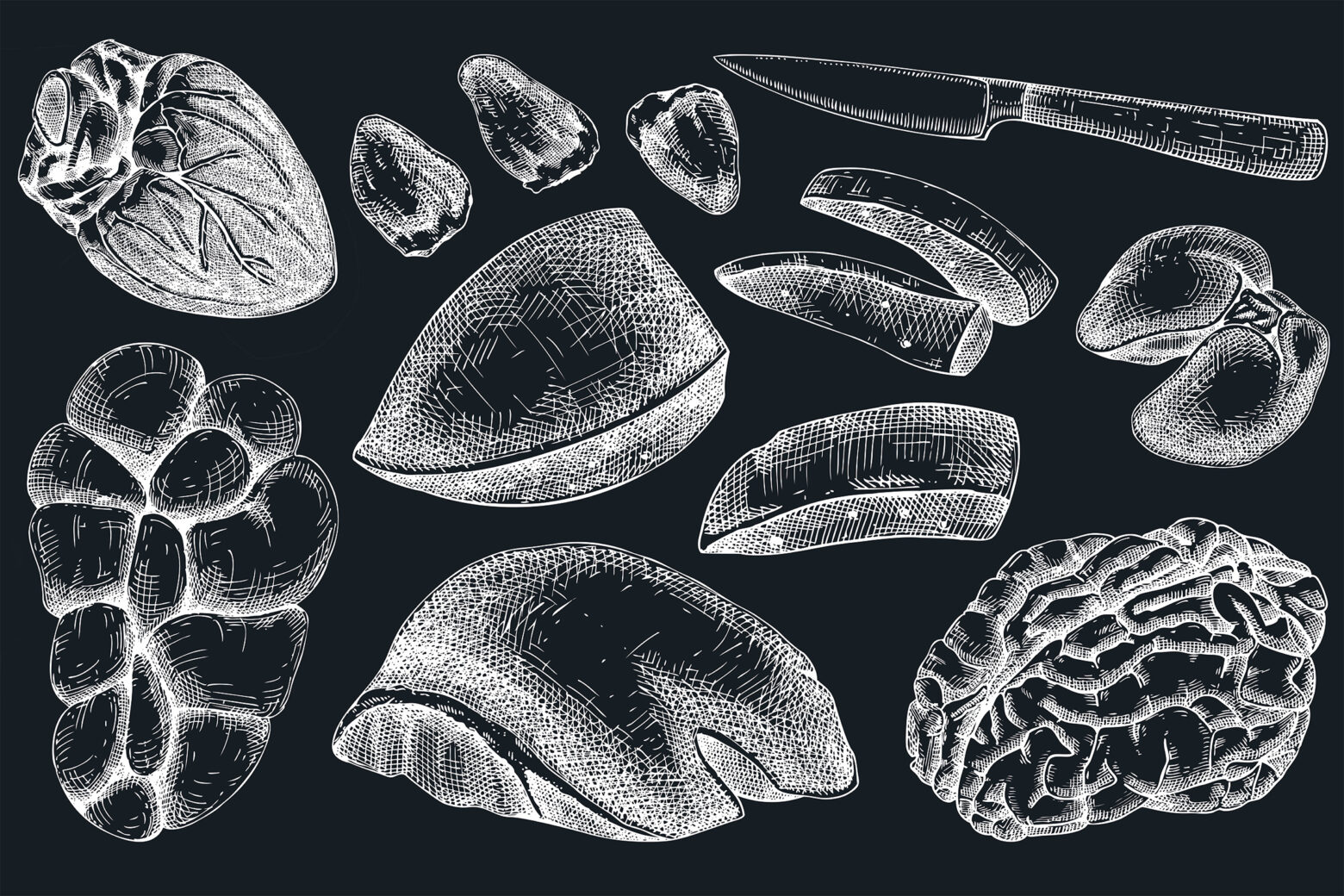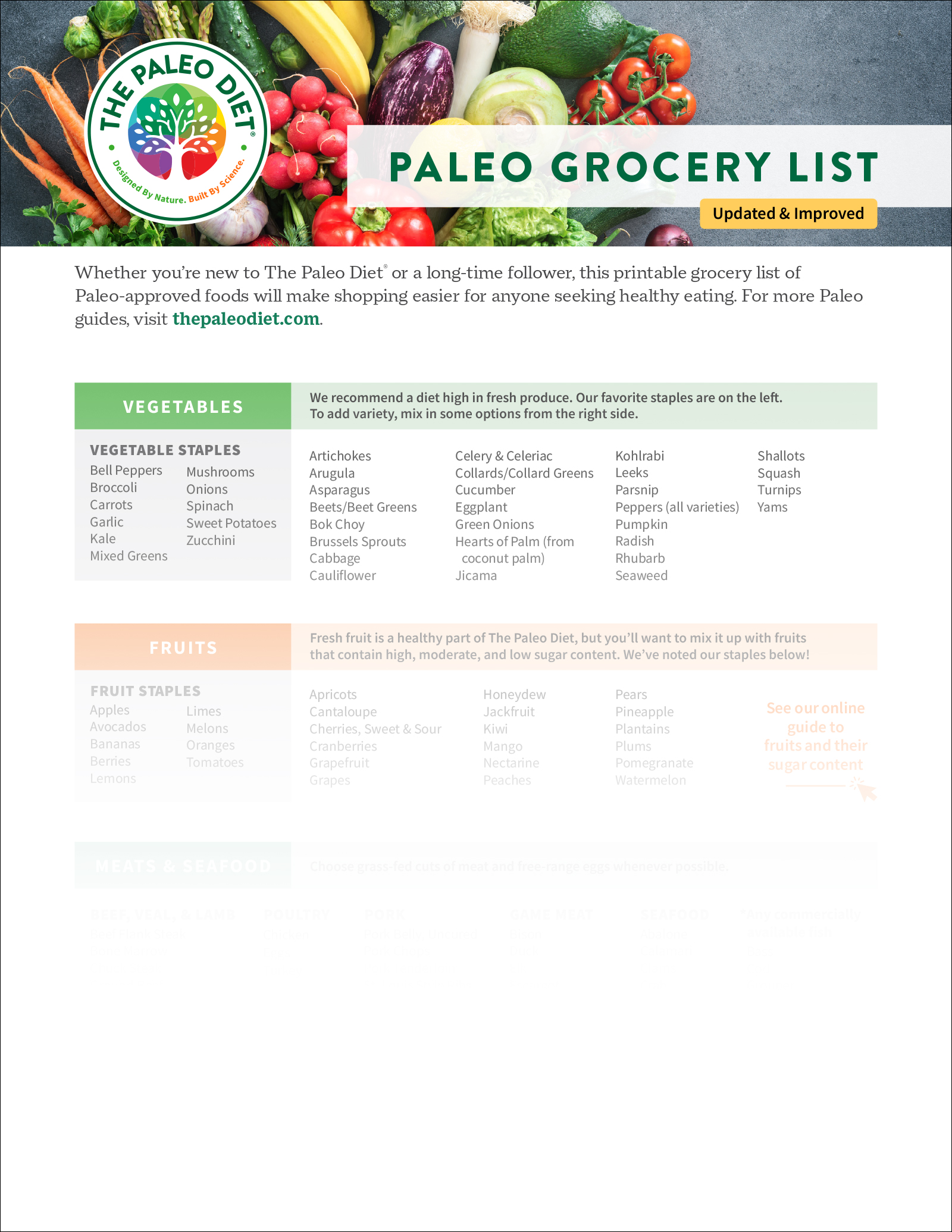The Paleo Power of Organ Meats (and What to Watch Out For)

When you think about eating for better health, you probably picture lean meats, leafy greens, and colorful veggies—not a plate of heart or liver. But if we’re serious about making the most of our food, it’s time to bring organ meats back to the table.
Once considered prized staples in traditional diets, organ meats are some of the most nutrient-rich foods available, packed with essential vitamins, minerals, and more. Yet today, they’re often overlooked in favor of lean muscle meats like chicken breasts and sirloin. If you want to eat more nutritiously and make the most of every part of the animal, organ meats deserve a second look.
What Are Organ Meats?
Organ meats—also called offal—are exactly what they sound like: the internal organs of animals prepared and eaten as food. While muscle cuts dominate most modern meals, organs like the liver, heart, kidneys, brain, tongue, and intestines have long been part of global culinary traditions.
These meats typically come from animals like cows, pigs, lambs, goats, chickens, and ducks. With the rise of industrial meat production and an emphasis on convenience, many of these cuts have fallen out of favor, despite their value in the kitchen and on our plates.
A Respectful, Whole-Food Approach
In traditional eating patterns around the world, organ meats weren’t just consumed—they were honored. Shared among elders, pregnant women, or reserved for special occasions, these nutrient-rich cuts supported whole-body health long before nutrition science confirmed their benefits.
Today, eating organ meats can reflect the same respect for our bodies, our food system, and the animals we rely on. From a sustainability perspective, nose-to-tail eating helps reduce food waste and makes the most of each animal raised for consumption.
Melissa Larsen, MPH, a food systems consultant who oversees regenerative projects for Thousand Hills Beef, puts it this way: “The more nutritious something is, the more packed with flavor it is.”
Nutrient Density That’s Hard to Beat
Compared to common muscle meats, organ meats deliver significantly higher levels of key nutrients like vitamins A and B12, folate, iron, and coenzyme Q10 (CoQ10). Just a few ounces can maximize your micronutrient intake.
Here’s some of the key nutrients the most popular organ meats offer:
Liver: Energy, Immunity, and Blood Health
Often considered the most nutrient-dense food on the planet, liver is a powerhouse of bioavailable vitamins and minerals.1 It’s especially rich in:
- Vitamin A: Supports vision, immune function, and cellular repair2
- Iron (heme): Highly absorbable form of iron vital for red blood cells3
- Folate: Essential for red blood cell production, DNA repair, heart health, and energy metabolism
Heart: Cardio and Mitochondrial Support
- CoQ10: Supports energy production and heart health4
- B vitamins: Help convert food into energy and support nervous system function
- Zinc and Iron: Boost immune health and oxygen transport5
Kidneys: Detox and Thyroid Support
- Selenium: Supports thyroid hormone production and immune regulation6
- Zinc: Helps with wound healing, immune function, and hormone balance
- Vitamin B12: Crucial for nerve health, DNA repair, heart health, and energy
Tongue & Brain: Cognitive and Cellular Health
- Tongue: High in fatty acids, zinc, iron, and vitamin B127
- Brain: Rich in DHA (omega-3), choline, and phosphatidylserine—key for memory, mood, and brain development8
How Much Is Too Much? What to Be Cautious About
While organ meats offer exceptional nutritional value, they’re also incredibly rich, and that means a little can go a long way. Like any potent source of nutrients, they’re best enjoyed in balance. Here are a few things to keep in mind when adding organ meats to your diet.
Vitamin A Toxicity from Liver
Liver is one of the most concentrated sources of preformed vitamin A. However, consuming too much liver too often can lead to vitamin A toxicity, particularly if you’re also supplementing or eating fortified foods.2,9
Symptoms of excess vitamin A intake can include nausea, dizziness, blurred vision, and, over time, liver damage or bone issues.10
Enjoy Responsibly: We recommend 1–2 small servings of liver per week (roughly 3–4 oz. each).
Saturated Fat and Cholesterol Content
Some organ meats—like brain, tongue, and kidney—contain more saturated fat and cholesterol than lean cuts. If you’re getting organ meats from high-quality sources, you’re eating these meats in the natural form that our bodies are adapted to, so this shouldn’t be a concern for most people.
Enjoy Responsibly: Those with specific cardiovascular risks should be aware of the higher saturated fat and cholesterol content and may want to eat certain organ meats in moderation.11
Toxins and Bioaccumulation
Organs like the liver and kidneys filter substances in the body, so sourcing matters. Animals raised with hormones, antibiotics, or exposed to environmental toxins may pass residues into their organs.12
Larsen emphasizes, “Consumers should know where their food is coming from. If animals are grazing on clean pastures and not exposed to pesticides or antibiotics, there’s no concern about toxins passing into their organs. But if they’re in confined environments or eating contaminated feed, those substances could concentrate in the organs.”
Enjoy Responsibly: Opt for pasture-raised, grass-fed, or organic sources when possible.
Heavy Metals in Marine Organ Meats
Organs from large predatory fish like tuna or swordfish can contain higher levels of mercury and other heavy metals, especially in the liver.13
Enjoy Responsibly: Stick with land-based animal organs unless you have access to tested, sustainably sourced marine organs.
How to Add Organ Meats to a Healthy Diet (without the Overwhelm)
If you’re new to eating organ meats, it’s perfectly normal to feel hesitant at first. These cuts can have a stronger flavor and different texture than muscle meat, but with the right preparation, they can become a seamless (and delicious) part of your diet. The key? Start slow, use bold flavors, and find prep methods that work for you.
Mix It In
One of the easiest ways to get started is by blending small amounts of organ meat into familiar dishes. Larsen recommends trying Thousand Hills Beef Renegade Blend, which combines ground heart and liver with traditional beef.
“It gives you the nutritional benefits of organ meat without changing the flavor much,” she says. “I use it for tacos or spaghetti and my family gobbles it up—without even noticing.”
Lean on Flavor-Packed Dishes
Organ meats pair well with rich, spiced recipes that mellow their flavor. Think dishes with tomato-based sauces (like Bolognese or stuffed peppers), Indian or Thai curries made with coconut milk, or slow-cooked stews. Vietnamese pho is another great option—it traditionally includes cuts like tendon, tripe, and even tongue.
Explore Pâté
Liver pâté is a classic for a reason. It’s rich, spreadable, and nutrient-dense. Try it on grain-free crackers, cooked sweet potato rounds, or even fresh-cut veggies for an easy, high-impact snack. Just be careful about the high salt content in some pâtés.
Source Smart
Just as important as how you cook organ meats is where they come from. “Know your farmer—but more importantly, know your farmer’s practices,” Larsen emphasizes.
Organs can reflect the quality of an animal’s diet and environment, so choose pasture-raised, grass-fed sources whenever possible—whether from a local butcher, farmers market, or trusted online supplier.
The Bottom Line
Organ meats are a powerful, underrated way to support a nutrient-rich diet. By choosing high-quality sources and incorporating them mindfully, you can enjoy their health benefits while honoring the full value of the animals we eat.
References
- (2019, April 1). Beef, variety meats and by-products, liver, raw. FoodData Central; U.S. Department of Agriculture. https://fdc.nal.usda.gov/food-details/169451/nutrients
- National Institutes of Health. (2023). Office of Dietary Supplements – Vitamin A. Nih.gov; National Institutes of Health. https://ods.od.nih.gov/factsheets/VitaminA-HealthProfessional/
- T.H. Chan. (2019, September 16). Iron. The Nutrition Source; Harvard. https://nutritionsource.hsph.harvard.edu/iron/
- Ercan, P., & El, S. N. (2011). Changes in content of coenzyme Q10 in beef muscle, beef liver and beef heart with cooking and in vitro digestion. Journal of Food Composition and Analysis, 24(8), 1136–1140. https://www.sciencedirect.com/science/article/abs/pii/S0889157511001517
- (2019, April 1). Beef, variety meats and by-products, heart, raw. FoodData Central; U.S. Department of Agriculture. https://fdc.nal.usda.gov/food-details/168625/nutrients
- National Institutes of Health. (2021, March 26). Office of Dietary Supplements – Selenium. Nih.gov. https://ods.od.nih.gov/factsheets/selenium-healthprofessional/
- (2019, April 1). Beef, variety meats and by-products, tongue, raw. FoodData Central; U.S. Department of Agriculture. https://fdc.nal.usda.gov/food-details/170196/nutrients
- (2019, April 1). Lamb, New Zealand, imported, brains, raw. FoodData Central; U.S. Department of Agriculture. https://fdc.nal.usda.gov/food-details/174437/nutrients
- National Institutes of Health. (2022). Office of Dietary Supplements – Vitamin A. National Institutes of Health. https://ods.od.nih.gov/factsheets/VitaminA-Consumer/
- Vitamin A. (2012). PubMed; National Institute of Diabetes and Digestive and Kidney Diseases. https://www.ncbi.nlm.nih.gov/books/NBK548165/
- Carson, J. A. S., Lichtenstein, A. H., Anderson, C. A. M., Appel, L. J., Kris-Etherton, P. M., Meyer, K. A., Petersen, K., Polonsky, T., & Van Horn, L. (2020). Dietary Cholesterol and Cardiovascular Risk: A Science Advisory From the American Heart Association. Circulation, 141(3), 39–53. https://www.ahajournals.org/doi/10.1161/CIR.0000000000000743
- Ali Hassan, A., Rylander, C., Brustad, M., & Sandanger, TorkjelM. (2012). Level of selected toxic elements in meat, liver, tallow and bone marrow of young semi-domesticated reindeer (Rangifer tarandus tarandus L.) from Northern Norway. International Journal of Circumpolar Health, 71(1), 18187. https://pmc.ncbi.nlm.nih.gov/articles/PMC3417694/
- Nutrition, C. for F. S. and A. (2020). FDA/EPA 2004 Advice on What You Need to Know About Mercury in Fish and Shellfish. FDA. https://www.fda.gov/food/environmental-contaminants-food/fdaepa-2004-advice-what-you-need-know-about-mercury-fish-and-shellfish
Maureen Farrar
Maureen Farrar has spent more than 20 years as a writer and editor for several print and digital outlets. She writes about health, fitness and nutrition.
More About The Author




